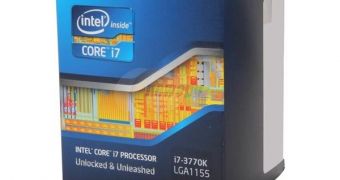We knew that many Sandy Bridge central processing units would see the end of their lives soon, but we did not have too many specifics. Now, though, we do, thanks to product change notices we've been receiving, as well as a report from DigiTimes.
The Ivy Bridge CPU architecture, based on the 22nm manufacturing process, has the market mostly covered by now.
That means the Core Series, Celeron and Pentium chips based on the Sandy Bridge architecture have to go.
According to our findings, Intel has more or less digested its inventories of such processors, so it makes sense to remove them from its product lists altogether.
It won't all happen at once, but the roadmap does seem to suggest that the Santa Clara, California-based company isn't wasting any time tying up these loose ends.
The Sandy Bridge-based 32nm Pentium G870, G645 and G645T, for example, will be out of the picture by the end of the year (2012). The same goes for the Celeron G555, G550 and G550T CPUs.
The Pentium G440, Core i7-2700K, Core i5-3450, Core i5-2310 and Core i3-2105 won't be gone quite so far, but shops and PC makers won't be able to order them anymore from January onwards.
On the desktop front, Sandy Bridge will linger for a while longer. Currently, it accounts for 60% of all shipments, while Ivy Bridge covers 34%. Atom and Sandy Bridge-E have 4% and 2%, respectively.
In the first half of 2013, Pentium and Celeron Ivy Bridge CPUs will finally debut, as will Haswell. This will change the face of the market. Haswell will only manage 4%, but Ivy Bridge will account for 75-78% of Intel's CPU sales.
Haswell will only do better in the third and fourth quarters of 2013, when its market share will reach 20%. Sandy Bridge will only keep 4% by that point.

 14 DAY TRIAL //
14 DAY TRIAL //